Seminars are held at 4:00 PM on Tuesdays in Room F160
on the first floor of the Technological Institute (2145 Sheridan Road) unless otherwise noted
Winter Quarter 2011
| Date | Visitor / Seminar | Host | |
| Jan. 18 | 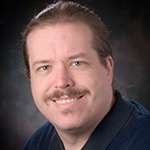 |
Doug Clowe Since Zwicky (1933), we have known that clusters of galaxies have gravitational potentials, which are too large to be explained by the amount of visible baryons under the assumption of a Newtonian gravitational force law. This has led to competing hypotheses that either the masses of clusters are dominated by a non-baryonic form of matter or that gravity departs from a 1/r^2 force law on cluster scales. By using merging clusters of galaxies, I will show that the different types of matter in the clusters can be spatially separated and, by using gravitational lensing, I will prove, independent of any assumptions about the nature of the law of gravity, that the dominant mass component of the clusters is not the visible baryons. I will also discuss how these observations can be used to place constraints on the nature of the dark matter, including a limitation on the self-interaction cross-section of any dark matter particles, and how these may be used to test alternative gravity models. | Mel Ulmer |
| Jan. 25 |  |
Jonathan Mitchell Prograde winds directly over the equator are a clear indicator of superrotation, a state in which an atmosphere rotates faster than the solid body rate. Two of the four terrestrial bodies with thick atmospheres, Titan and Venus, maintain strong superrotation, while Earth and Mars do not, although Earth may have in its past. Both Saturn and Jupiter maintain broad, superrotating equatorial jets. Following a brief review of these phenomena, I will demonstrate the mechanism giving rise to superrotation in terrestrial atmospheres using a series of idealized numerical experiments showing a transition to superrotation. The mechanism identified in the experiments will then be used to give context to the phenomena of superrotation in the Solar System. |
Yoram Lithwick |
| Feb. 1 |
 |
Bret Lehmer The combination of X-ray observations with Chandra and complementary multi-wavelength data sets provide a unique means for studying the evolution of galaxies from the perspective of their X-ray binary populations. In the nearby Universe, recent Chandra and multi-wavelength observations of large populations of galaxies have made it possible to study directly and calibrate how X-ray binary activity in normal galaxies scales with galaxy properties. In the distant Universe, the deepest extragalactic X-ray surveys to date, the Chandra Deep Fields (CDFs), have X-ray depth and multi-wavelength coverage sufficient for measuring how X-ray binary activity in galaxy populations have evolved to beyond half of the age of the Universe. In this talk, I will highlight several key studies of normal galaxy populations that have provided insight into (1) how X-ray binary activity in normal galaxies scales with galaxy physical properties (e.g., SFR and stellar mass); (2) the frequency and environments by which luminous X-ray binaries are formed in galaxies over the last few billions of years; and (3) the evolution of X-ray binary emission in star-formation active and passive galaxies over the last 9 billion years. I will discuss theoretical work that we are doing to interpret these observations in terms of the physical processes involved in binary production and evolution, as well as prospects for deeper X-ray surveys. |
Vicky Kalogera |
| Feb. 8 |
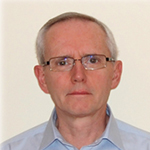 |
Tom Dame The so-called "Expanding 3-Kpc Arm" is one of the most prominent spiral arms in our Galaxy and one of the most puzzling. Discovered over 50 years, the arm's overall structure and its absorption of continuum emission from the Galactic center demonstrate beyond doubt that it lies on the near side of the center and is expanding away from it at 53 km/s. Based on a reanalysis of our extensive survey of dense molecular gas in the Galaxy, carried out with two small millimeter-wave telescope in Cambridge, MA and in Chile, we have recently discovered the long-sought counterpart of the Expanding Arm on the far side of the Galaxy. Once account is taken for its greater distance, the "Far 3-Kpc Arm" displays a beautiful symmetry with its near-side counterpart in overall structure, kinematics, and mass. Recent high-resolution CO observations of the Far Arm with the Mopra telescope in Australia will be presented and the relationship of this unique pair of arms to the Galactic bar discussed. | Farhad Zadeh |
| Feb. 15 | 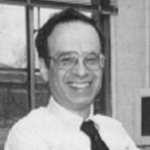 |
Eric Herbst The exciting new results from the Herschel Space Observatory and the results expected shortly from the Stratospheric Observatory for Infrared Astronomy (SOFIA) and from the Atacama Large Millimeter/Submillimeter Array (ALMA) are ushering in a new era of molecular astronomy, in which our molecular models will be tested as never before. Recent results from Herschel with the HIFI heterodyne receiver, which operates up to 1.9 THz in frequency, show that the interstellar medium in our own galaxy is far more complex than thought previously. In my talk, I will discuss observations and analyses related to three environments probed by Herschel: (a) a violent outflow in front of the Orion KL Nebula, in which several very reactive molecular ions (OH+ and H2O+) are quite abundant, (b) diffuse clouds in the spiral arms in which the ortho-to-para ratio of an unusual ion has the strange value of 4.8, and (c) a warm environment in front of two HII regions in which bare carbon chains (C3 and possibly C4) have been detected via low-frequency vibrational motions. |
Farhad Zadeh |
| Feb. 22 | 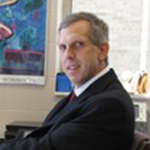 |
Marco Fatuzzo Basic star formation theory holds that a stars initial mass is dependent, at least in part, on the environment in which it is born. It is quite reasonable therefore to expect that the initial mass function (IMF) may vary for different types of stellar populations. Yet the IMF appears to be quite uniform throughout our galaxy. In order to gain insight into how cosmic-ray abundances may affect star formation process, we consider molecular clouds interacting with supernova remnants. Over the past decade, broadband observations have provided important clues about the content of relativistic particles within these regions, indicating that they may dominate over the locally observed cosmic-ray population by a significant amount. We present estimates of their over-abundances within these environments, and consider how they may effect various star-formation processes. |
Farhad Zadeh |
| March 1 |  |
Todd Thompson UV and optical radiation from massive stars is efficiently absorbed and scattered by dust grains in star-forming and starburst galaxies. The associated radiation pressure force may be the dominant feedback mechanism in galaxy formation. I will provide theoretical and observational support for and against this claim. In addition, I will describe observational and theoretical constraints on the magnetic field strengths and cosmic ray energy densities of starburst galaxies such as M82 and the ultra-luminous infared galaxy Arp 220, focusing on the importance of the observed FIR-radio correlation of galaxies. |
Ron Taam |
| March 8 | 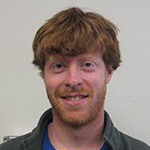 |
Nathan Kaib The trans-Neptunian object (TNO) Sedna is puzzling because its orbit displays evidence of significant gravitational perturbations from the local galactic environment even though its proximity to the Sun implies the odds of a ``Sedna-perturbing'' field star passage are improbably small. Consequently, Sedna is not considered a member of the conventional Oort Cloud sculpted by field star encounters and the galactic tide, and many alternative formation scenarios have been proposed to explain this object. However, new galactic evolution models suggest the Sun's radial position in the Milky Way (and hence its local galactic environment) has varied dramatically during its history. In particular, they find that the Sun may have formed closer to the Galactic center where local stellar densities are higher. Using numerical simulations, we demonstrate that the Sun's migration within the Galaxy can significantly alter the entire structure of the distant solar system. In particular, we find that it is in fact quite plausible for normal passing field stars to generate Sedna-like orbits. Depending on the Sun's orbital history, the probability of Sedna being generated by a simple field star passage varies between ~2 and 50%. Thus, Sedna's orbit may not require a special dynamical mechanism and may fit within the framework of an Oort Cloud sculpted by the conventional perturbations of passing field stars and the Milky Way tide. Conversely, this also raises the possibility that distant solar system bodies can constrain the Sun's past travels within the Milky Way, which may have astrobiological implications when the concept of the galactic habitable zone is considered. |
Nick Cowan |
| March 10 |  |
Ed Seidel Modern science is undergoing a profound transformation as it aims to tackle the complex problems of the 21st Century. It is becoming highly collaborative; problems as diverse as climate change, renewable energy, or the origin of gamma-ray bursts require understanding processes that no single group or community has the skills to address. At the same time, after centuries of little change, compute, data, and network environments have grown by 12 orders of magnitude in the last few decades. Cyberinfrastructure---the comprehensive set of deployable hardware, software, and algorithmic tools and environments supporting research, education, and increasingly collaboration across disciplines---is transforming all research disciplines and society itself. Motivating with examples ranging from astrophysics to emergency forecasting, I will describe new trends in science and the need, the potential, and the transformative impact of cyberinfrastructure. I will also discuss current and planned future efforts at the National Science Foundation to address them. |
CIERA Colloquium |
Past Astrophysics Seminars